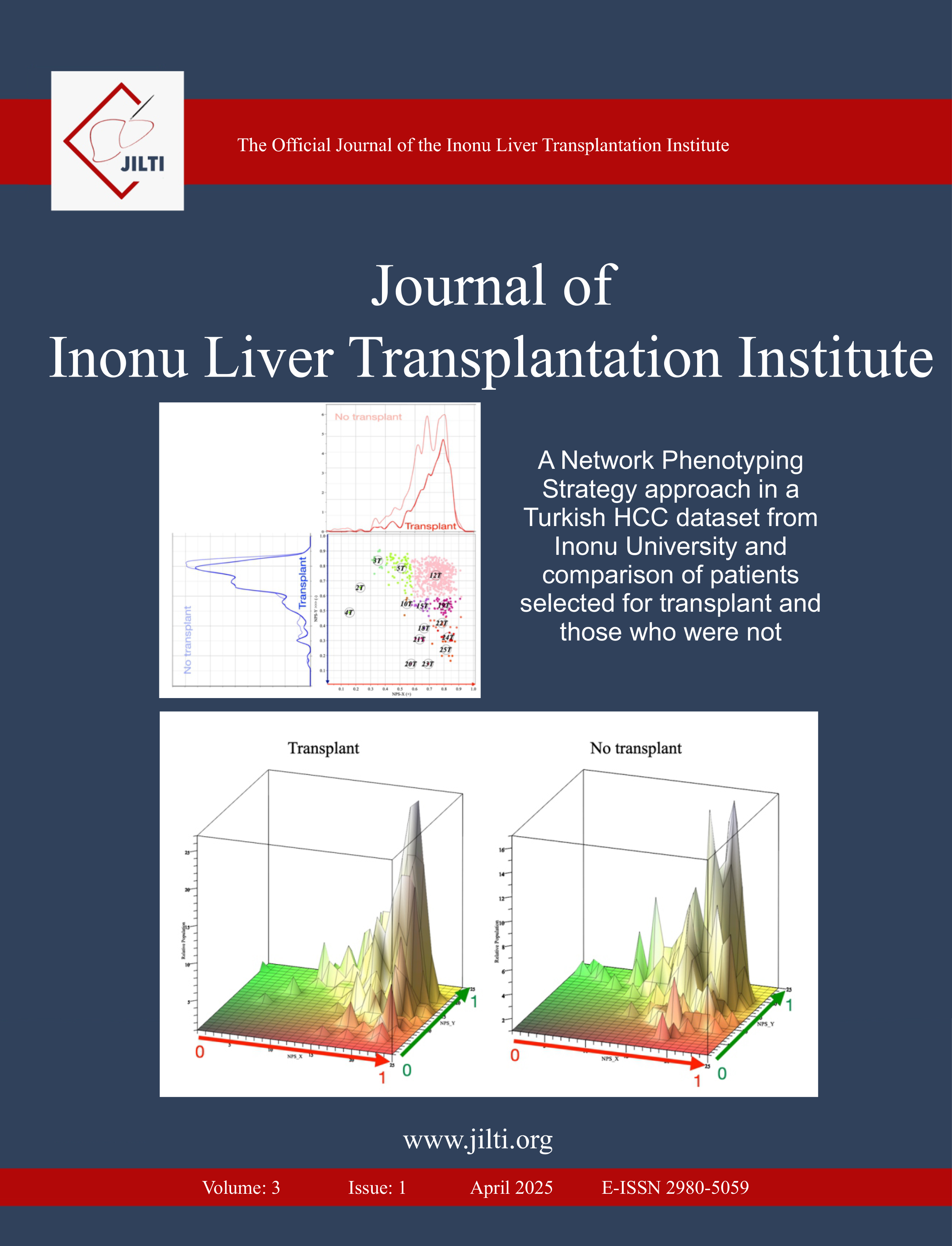Living Donor Liver Transplantation in Patients with Crigler-Najjar Syndrome Type 1: Report of Three Cases
Esra Guzelaltuncekic, Hasret Ayyildiz Civan, Ferhat Sari, Feyza Sonmez Topcu, Huseyin I. Toprak, Adem Tuncer, Emrah Sahin, Veysel Ersan, Bulent Unal, Abuzer DiricanIstanbul Aydin University, Florya VM Medical Park Practice and Research Hospital, Organ Transplantation Center, İstanbul, TürkiyeCrigler-Najjar syndrome (CNS) type 1 is a rare autosomal recessive disorder caused by mutations in the UGT1A1 gene, leading to a complete deficiency of the enzyme uridine diphosphate-glucuronosyltransferase (UGT1A1). This enzyme deficiency results in severe unconjugated hyperbilirubinemia, which poses a high risk of neurological complications, particularly kernicterus, if left untreated. While phototherapy provides temporary relief in early childhood, its diminishing effectiveness over time requires liver transplantation (LT) as the only definitive treatment. In this report, we present three pediatric cases of CNS type 1 treated successfully with living donor liver transplantation (LDLT). The first case, an 11-year-old girl, presented severe jaundice and neurological impairment but showed significant improvement in bilirubin levels and neurological symptoms after transplantation. The second case, a 12-year-old boy, had persistently high bilirubin levels despite phototherapy, which normalized after LDLT. The third case, an 11- month-old infant without prior treatment, also achieved complete normalization of bilirubin levels after transplantation. These cases demonstrate that LDLT is highly effective in preventing kernicterus, normalizing bilirubin levels, and improving clinical outcomes in patients with type 1 CNS. Long-term post-transplant care, including immunosuppressive therapy and regular follow- up, remains essential for optimal management and patient well-being.
Keywords: Autosomal recessive, crigler-najjar syndrome, liver transplant, orthotopic liver transplantation, ugt1a1, unconjugated bilirubin.Manuscript Language: English


